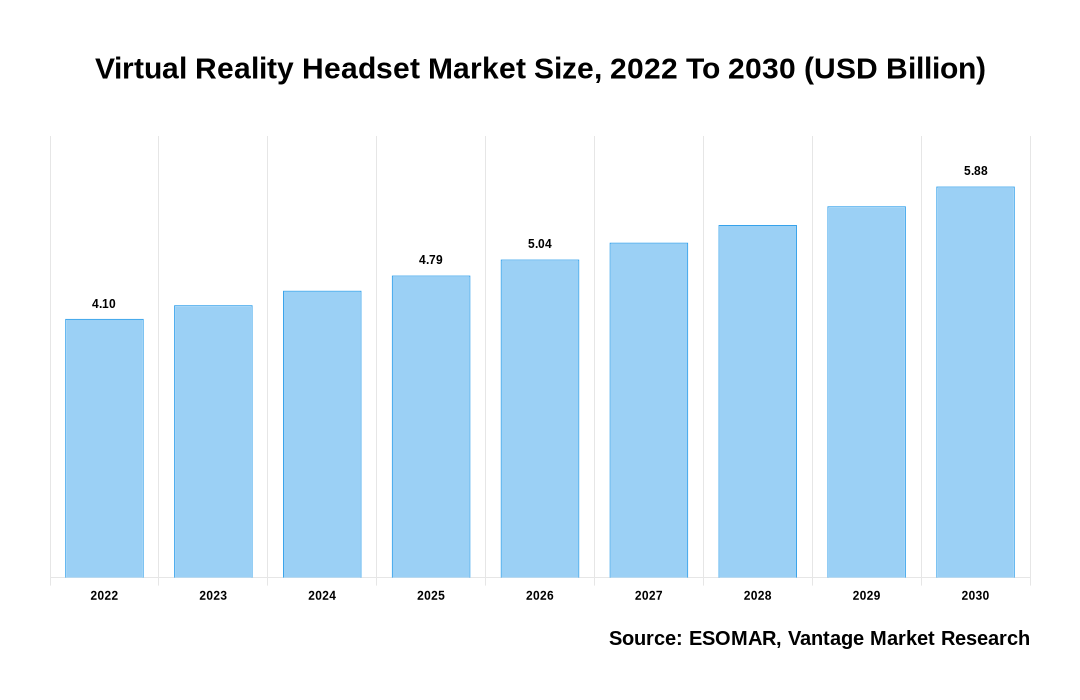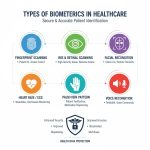Global Virtual Reality Headset Market
As stated in our extensive report; the Global Virtual Reality Headset Market accounted for USD 4.1 Billion in the year 2022 and is projected to reach a value of USD 5.88 Billion by 2030.
A Virtual Reality Headset, also known as a VR headset, is a hardware device that provides virtual reality experiences in 3D simulations, computer games, and other applications such as movies, play stations, etc. The VR headset comprises an organic light-emitting diode or liquid crystal display and a head movement tracking sensor that provides a real-looking 3D image. For instance, Red Hat 3scale API Management offers adaptability, consistency, speed, and quality. API management features include rate restrictions, access controls, and usage strategies.
The widespread deployment of virtual reality technology in retail and manufacturing sectors is driving the market’s growth. In addition, the growing demand for video game consoles is another driver for the development of the industry. Virtual reality technology has excellent potential for use in various applications, such as medical training, industrial prototyping, and education. Growing consumer investment in this technology and business investment are expected to drive demand for the products over the forecast period. New trends in virtual reality technology directly affect the development of the Virtual Reality Headset industry.
These are the primary factors that must be considered to propel the growth of the global Virtual Reality Headset market. However, the concern regarding the quality of visual effects delivered by the VR headset is a major factor that might inhibit the market growth of the global Virtual Reality Headset Market.
Click To Get a Free Sample On the Research Study

Key factors influencing Virtual Reality Headset Market Growth
The growth of the global Virtual Reality Headset market can be attributable to the following:
- The growing popularity of smartphones around the world and growing technological awareness are expected to stimulate the development of the Virtual Reality Headset market.
- The widespread deployment of virtual reality technology in retail and manufacturing sectors is driving the market’s growth. In addition, the growing demand for video game consoles is another driver for the development of the industry.
- VR headsets are widely used in the medical industry to train medical scientists in surgical procedures and other operations. With advances in technology, VR headsets with eye and motion detection are also being developed, improving the virtual reality user experience for years to come.
- The increasing adoption of virtual reality technology in virtual events, which helps companies reach their target customers in their comfort zones by offering lifelike experiences with their products and services, continues to drive the market’s growth.
- VR headsets are increasingly used in training methodologies, design processes, corporate environments, and for audience engagement, e.g., B. VR games, sports, movies, and more.
- The growing popularity of products in the entertainment and gaming industry drives the demand for VR-enabled head-mounted devices (HMDs). As a result, companies continue to deliver innovative devices that provide immersive experiences unparalleled in VR entertainment.
- In Europe, due to the extensive integration of intelligent devices, such as the implementation of VR headsets in industries such as defense, entertainment, and education, significant changes are expected in the market to improve and develop the viewing experience.
North America Region to Lead the Market
North America Virtual Reality Headset market is getting more significant with maximum market share during the forecast period. The North America region is expected to register the highest CAGR of over 32.9% between 2023 and 2030, driven by increasing digitization and the development of virtual reality technologies, especially in the gaming and entertainment sectors. In the regional market, China achieved the largest share of sales. This has been attributed to the advent of 5G and the Chinese government’s political support for advances in virtual reality. In addition, leading companies in the region are making extensive use of virtual reality technology for various purposes, thereby contributing to the regional market’s growth. For example, China released its virtual reality plan in November 2022, according to which the region plans to ship more than 25 million devices by the end of 2026, with a total value of more than $45 million. Furthermore, due to the high adoption of VR technology in the region due to increased disposable income and falling prices for headsets with screens and processors, significant revenue was generated from the North American portion in 2022.
Conclusion
The extensive application of virtual reality technology in the retail and manufacturing sectors is positively influencing the overall Virtual Reality Headset market.
The well-known players of the Global Virtual Reality Headset Market include Carl Zeiss AG (Germany), Facebook Technologies LLC (U.S.), Google LLC (U.S.), HTC Corporation (Taiwan), LG Electronics Inc. (South Korea), Microsoft Corporation (U.S.) and others.
![[Market Research Reports] – Research Google News Blog | VMR.Biz](https://www.vmr.biz/wp-content/uploads/2022/12/logo-removebg-preview.png)











